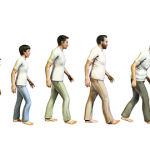NEW YORK (Reuters)—The U.S. government expects healthcare spending to increase by 5.8% annually on average from 2014 through 2024 as more Americans gain insurance coverage and the improved economy drives patients to visit doctors and hospitals.
The aging population’s higher healthcare costs will also push health spending higher starting in 2019, according to a study from the Office of the Actuary at the Centers for Medicare and Medicaid Services, part of the U.S. Department of Health and Human Services.
Prior to 2014, healthcare spending rates were running around 4% per year as the weak economy made people cut back on medical care that they could not afford.
That trend reversed in 2014, when the national healthcare reform law, often called Obamacare, extended insurance to millions of Americans through the expansion of the Medicaid program and new individual insurance plans.
The insurance expansion, as well as the price of new hepatitis C medicines that were introduced last year, contributed to a projected rise of 5.5% in 2014 in healthcare spending, the study found.
Average projected 2015 spending will decline slightly to 5.3% because the number of newly insured will ease compared with 2014 and because of lower hepatitis C drug prices this year, the study found.
Projected spending for the 2019–2024 period will increase to 6.2% per year on average due to the aging population, which will increase the number of people covered by Medicare, the insurance program for elderly people and the disabled. The aging population will also increase costs for people with Medicaid coverage, government researchers said.
People enrolled in the Medicare and Medicaid programs have higher medical costs than average Americans.
Medical prices are expected to rise above 2% per year starting in 2016, the first increase since 2011 and after years of historically low levels. That is partly due to expectations for higher healthcare wages related to the stronger economy.
Changes in private insurance that have shifted the cost of healthcare to individuals from insurers and employers through higher deductibles and co-pays will hold back further spending increases, the study found. Cuts in payments to doctors from the Medicare program will also hold back costs from rising further.
The government’s annual study, published online July 28 in Health Affairs, increased its 10-year projected spending increase to 5.8% from the 5.7% it predicted in last year’s study.

